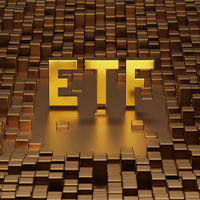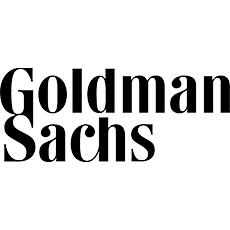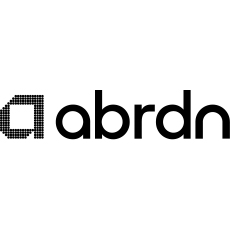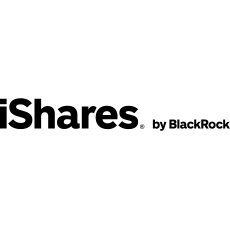Find the best gold ETFs
How to pick the right gold for your portfolio

Gold exchange-traded funds (ETFs) let you invest in gold without owning the metal itself. Instead, these funds trade like stocks and either track the spot price of gold or invest in entities involved in the gold industry, such as gold mining companies.
Gold ETFs are an excellent option for investors who want exposure to the gold market and gold futures without dealing with shipping, storage and insurance.
There are dozens of gold ETFs on the market to choose from, but to help you narrow down your choices, we’ve rounded up a few of the most popular.
Our top 5 picks for gold ETFs
While you’re reviewing gold ETFs, consider performance, expense and stability. In our review of popular gold ETF options, we used ETF.com for market performance and the individual fund managers' websites for specific fund information. All of the ETFs we have selected have expense ratios below the average of 0.61%.
The commodity ETFs on our list are almost all ones that trade in physical gold. However, you might also look to gold mutual funds that have a position in gold mining companies.
Not every ETF on this list will fit your investing goals, so we’ve put together a list of things we like about each one, plus a few things to consider.
- Granite Shares Gold Trust (BAR)
- Goldman Sachs Physical Gold ETF (AAAU)
- Aberdeen Standard Physical Gold Shares ETF (SGOL)
- iShares Gold Trust (IAU)
- SPDR Gold Shares (GLD)
Gold and other precious metals are an investment and carry risk. Consumers should be alert to claims that customers can make a lot of money in these or any investment with little risk. As with any investment, you can lose money and past performance is not a guarantee of future performance results. Consumers should also obtain a clear understanding of the fees associated with any investment before agreeing to invest.
|
|
Goldman Sachs Physical Gold ETF consists entirely of physical gold assets. AAAU has an inception date of July 26, 2018, and presently manages assets totaling more than $632 million.
AAAU tracks the gold spot price minus trust expenses. The fund's physical gold assets are held in a secure vault in London. With an expense ratio of 0.18%, AAAU is one of lowest-cost funds on our list.
Investors who appreciate a fund manager with broad market experience will find value in the oversight of Goldman Sachs.
What we like
- Closely tracks the spot price of gold
- Fully backed by physical gold assets
- Low share price
What to consider
- Slightly higher expense ratio than some competitor ETFs
- Taxed as a collectible
How to invest in gold ETFs
If you're new to investing in gold ETFs, don't worry — it is very similar to investing in the stock market. There are no accreditation requirements, and many funds offer affordable entry points, so the barrier to gold investments is low.
Here’s a quick starter guide to investing in gold ETFs:
- Set your budget. Determine how much money you'd like to invest — and how much you are comfortable risking.
- Do your research. Gain a deeper understanding of the gold market as well as individual gold funds you're considering. Take time to understand gold futures as well, as this is another investment strategy to consider.
- Open a brokerage account. If you don't already have a brokerage account, you'll need to open one with a traditional brokerage or an online trading platform.
- Buy gold. You can buy shares of gold just as you would buy shares of stock. Some brokers offer fractional share investing, allowing you to invest in smaller amounts.
- Prepare for the tax implications. As with most other assets and investments, gold is taxable, so you'll want to plan accordingly.
» MORE: Capital gains vs. investment income: how they differ
“Investing in gold ETFs isn't rocket science, but it does require some strategy,” said James Allen, the founder at Billpin, a personal finance website. “It's not just about buying low and selling high. You need to consider your overall portfolio, risk tolerance and investment horizon.”
Allen also recommends choosing several ETFs instead of just one. “Diversification is key. Don't put all your eggs in one basket, or in this case, all your gold in one ETF. And remember, patience is a virtue in the world of investing.”
» MORE: What is a good investment?
FAQ
Are gold ETFs safe?
Gold ETFs are regulated by the Securities and Exchange Commission (SEC). Gold has traditionally been considered a “safe haven” asset that retains its purchasing power over time — however, there is still a risk of loss when investing in gold ETFs, including total loss of funds. While ETFs are regulated, it doesn’t mean their value can’t go to zero.
Do gold ETFs pay interest?
Unlike dividend stocks and other investments, gold ETFs do not typically pay any interest. Returns are solely based on the price of gold. Some gold mining ETFs may offer a dividend or interest, but it varies based on the ETF you are investing in.
Are gold ETFs taxed?
If you’re investing in a physically backed gold fund, meaning your investment results in real gold with your name on it, the IRS views it as a collectible rather than a traditional investment. You may not possess the gold, but you do own it. Tax rates on collectibles can be up to 28%, which is a bit more than the typical 20% capital gains rate of other investment classes.
To avoid the increased collectibles tax, you might consider investing in a gold fund made up entirely of gold mining companies. You are exposed to the volatility of the companies within the fund and the gold market, but you won’t trigger the collectible tax by owning physical gold.
Is a gold ETF better than physical gold?
One is not necessarily better than the other, as both physical gold and commodity ETFs give you diversification and exposure to the fluctuations of the gold market. However, while with ETFs you only need to connect your brokerage account and purchase shares of the fund, owning physical gold requires you to arrange shipment and delivery, and you may need to pay for storage and insurance as well.
Bottom line
Gold ETFs have become a popular way to invest in gold without the hassle of shipping, storing and insuring physical gold bullion. There are several good options to choose from with low expense ratios that are backed by physical gold, making it a great way to invest in this precious metal.
Article sources
- ETF.com, “ Gold Overview .” Accessed July 27, 2023.
- IRS, “ Issue Snapshot - Investments in Collectibles in Individually-Directed Qualified Plan Accounts .” Accessed July 27, 2023.
- IRS, “ Topic No. 409, Capital Gains and Losses .” Accessed July 27, 2023.
You’re signed up
We’ll start sending you the news you need delivered straight to you. We value your privacy. Unsubscribe easily.




